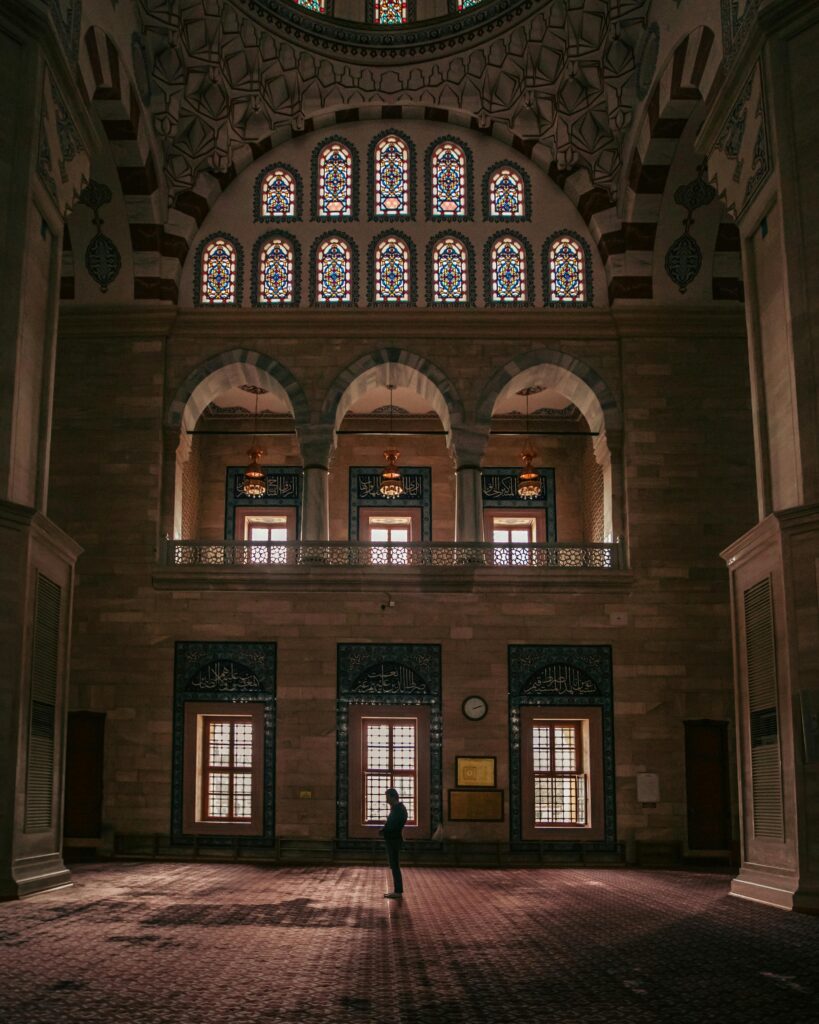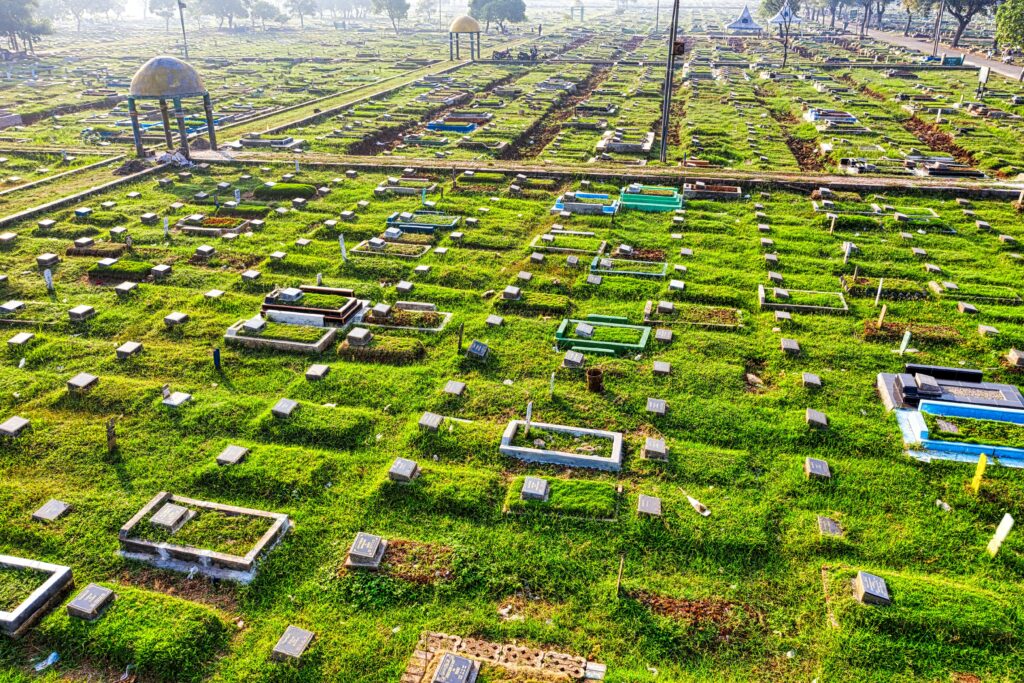Guidance regarding basic Islamic issues that Hazrat Amirul Momineen, Khalifatul Masih Vaa, has given on various occasions in his written correspondence and during MTA programmes is being published officially below for everyone’s benefit.
Is hosting a feast on the occasion of a child’s circumcision permissible in Islam?

A missionary from Bangladesh sent a query to Hazrat Amirul Momineen, Khalifatul Masih Vaa, asking whether it is permissible to invite people for a meal at the time of a child’s circumcision [khitan]. In a letter dated 21 January 2023, Huzoor-e-Anwaraa provided the following guidance on this matter:
“There is no mention in the Holy Quran or in the most authentic collections of Hadith regarding the permissibility or impermissibility of holding a feast on the occasion of a child’s circumcision. However, in some secondary collections of Hadith, there are some reports on whether such a feast is permissible or not. Scholars of Hadith have critically examined their chains of narration and declared these reports weak. For example, Saalimrh relates that ‘Hazrat Abdullah bin ‘Umarra circumcised both me and Nu‘aym and on our behalf, one ram was sacrificed. Hence, we would take pride among the other children that a ram had been slaughtered on our behalf.’ (Imam Bukhari, Al-Adab Al-Mufrad, Bab ad-da‘wati fi l-khitan)
“On the contrary, Hasan al-Basrirh relates that, ‘Hazrat ‘Uthman bin Abi al-‘Aasra was invited to a feast on the occasion of a circumcision and he refused to accept that invitation. When asked for the reason, he said, ‘During the blessed life of Allah’s Messengersa, we would neither attend such a feast nor were we invited to it.’’ (Musnad Ahmad bin Hanbal, Musnad al-Shamiyyin, Hadith ‘Uthman bin Abi al-‘Aas)
“According to the four major schools of jurisprudence, apart from the walimah feast, hosting a meal for a circumcision or for other occasions and inviting people to it is considered commendable [mustahabb], because it entails feeding others. Likewise, it is also mustahabb, not wajib or obligatory to accept such invitations. (Ibn Qudamah, al-Mughni, Fasl: Idha ‘alima anna fi l-walimati munkaran; Mas’alah: Da‘wat al-khitan)
“There are also accounts of circumcision feasts during the blessed era of the Promised Messiahas. Thus, Hazrat Sahibzada Mirza Bashir Ahmadra writes:
“‘Munshi Zafar Ahmad Sahib Kapurthalvi[ra] narrated to me in writing that, ‘This was before the First Bai‘at [of 1889]. I was in Qadian. There was some wedding or circumcision ceremony in Faizullah Chak, for which the Promised Messiahas was invited along with a few khuddam. Upon their insistence, the Hazrat Sahibas accepted the invitation. About ten or twelve of us accompanied Huzooras to Faizullah Chak. Just as we reached close to the village, we heard the sound of singing and musical instruments, which was taking place at that event. As soon as Huzooras heard this, he turned back. When the people of Faizullah Chak found out, they came and earnestly pleaded with him, but the Huzooras did not accept and returned.’’ (Sirat-ul-Mahdi, Vol. 2, Part 4, Narration 1053, 2008, p. 49)
“Likewise, Hazrat Hafiz Ghulam Rasul Sahib Wazirabadira narrates:
“‘On one occasion, I went to Qadian and mentioned my legal cases. I told [the Promised Messiahas] that opponents had filed false lawsuits against me, swearing false oaths and thereby confiscating my house. Huzooras remarked, ‘Hafiz Sahib, people even ruin their houses by holding ceremonies for their sons’ weddings and circumcisions in them. If your house has gone for the sake of God, then let it go. Allah the Exalted will grant you something better in its place.’’ (Register Riwayat-e-Sahabah, No. 4, p. 113, unpublished)
“Thus, holding a feast on the occasion of a child’s circumcision is neither obligatory nor has it been prohibited. Hence, if someone, as an expression of their joy and within their means, chooses to feed their friends and relatives and does not transgress any of the bounds laid down by Islamic teachings, then there is no harm. However, no one should consider such feasts to be obligatory, nor turn them into a formal custom or ceremony.”
Are there any prescribed words for the intention (niyyah) for salat?

A lady from Malaysia wrote to Hazrat Amirul Momineen, Khalifatul Masih Vaa, referring to an episode of [MTA International’s] Fiqahi Masa’il programme on YouTube regarding the intention [niyyah] for salat. In that episode, it was stated that according to the sunnah of the Holy Prophetsa, there are no specific words of intention to be recited before saying the opening takbir. However, on Alislam.org, under the heading “Niyyah or Intention,” the following verse is mentioned along with the instruction to recite it before beginning the prayer:
“اِنِّیْ وَجَّہْتُ وَجْہِیَ لِلَّذِیْ فَطَرَ االسَّمٰوَاتِ وَاْلاَرْضَ حَنِیْفًا وَّمَا اَنَا مِنَ الْمُشْرِکِیْن” (Surah al-An‘am, Ch.6: V.80)
She asked for guidance on this apparent contradiction.
In his letter dated 21 January 2023, Huzoor-e-Anwaraa gave the following reply:
“The response given in the said episode of Fiqahi Masa’il about the intention for prayer is correct, in that there are no prescribed words that must be repeated before starting the prayer. The intention [niyyah] for salat is tied to a person’s heart, meaning one should be conscious in one’s heart of which specific prayer is being offered and for which time of the day, etc. Uttering any particular phrase verbally or reciting the Quranic verse “اِنِّیْ وَجَّہْتُ وَجْہِیَ لِلَّذِیْ فَطَرَ االسَّمٰوَاتِ وَاْلاَرْضَ حَنِیْفًا وَّمَا اَنَا مِنَ الْمُشْرِکِیْن” (Ibid.) specifically as a form of ‘intention’ before commencing the salat is not established by any definitive textual evidence.
“I am also instructing the relevant department to correct this mistake on Alislam.org.”
What is the Islamic ruling on grave construction and elevation?

Someone from Sri Lanka wrote to Hazrat Amirul Momineen, Khalifatul Masih Vaa, enquiring about the following statement of the Promised Messiahas in Sirr-ul-Khilafah: “His [i.e., Hazrat Abu Bakr’sra] tomb was made flat like the tomb of the Prophetsa.” He asked what “flat” refers to and whether the Holy Prophet’ssa grave was not made in the shape of a mound – what is the wisdom behind this?
In a letter dated 23 January 2023, Huzoor-e-Anwaraa provided the following guidance:
“According to Islamic teachings, burying the deceased in a grave is an excellent means of laying them to rest. Any display of ostentation or extravagance in this regard is discouraged. Nonetheless, there is no harm in reinforcing the sides of a grave or building a room or dome over it under unavoidable circumstances or if there is a necessity to do so. This is evident from the fact that the Holy Prophetsa was buried in Hazrat Aisha’sra chamber, wherein his grave was made. She explained the wisdom behind this arrangement, relating that ‘During his final illness, the Holy Prophetsa said, ‘May Allah keep those Jews and Christians, who turned the graves of their Prophets into places of prostration, away from His mercy.’ Had it not been for this, his grave would have been placed outside the chamber. However, out of fear that it might be taken as a place of prostration, (his grave was placed inside the chamber.)’ (Sahih al-Bukhari, Kitab al-jana’iz, Bab ma yukrahu min ittikhadhi l-masajidi ‘ala l-qubur)
“Since Islam has instructed that the respect of the body of the deceased should also be upheld, a grave is typically raised slightly above the ground so that it is distinguished from the surrounding land and not desecrated inadvertently. From the earliest days of Islam, graves have been made in two ways: either slightly elevated above the ground and then levelled on top, or raised in the shape of a mound. Hence, Qasim bin Muhammad, a grandson of Hazrat Abu Bakrra, narrates that he once visited Hazrat Aishara and requested to see the graves of Allah’s Messengersa and his two Companions. So, she moved aside the curtain from all three graves for his sake and he saw that none of those graves were very high, nor were they entirely flat with the ground; rather, they were slightly raised above the surface, covered with red pebbles from the plain. (Sunan Abi Dawud, Kitab al-jana’iz, Bab fi taswiyati l-qabr)
“From the books of Hadith and works on history and sirah, we learn that when the Holy Prophetsa and his two Companions were initially laid to rest, their graves were raised slightly above the ground but were level on top. However, during the reign of Walid bin ‘Abd al-Malik, when the structure of Hazrat Aisha’sra chamber became dilapidated and its wall collapsed (Sahih al-Bukhari, Kitab al-jana’iz, Bab ma ja’a fi qabri an-nabiyysa), it was rebuilt and at that time the graves were shaped in the form of a mound. Sufyan bin Dinar al-Tammar reported that he saw the grave of the Holy Prophetsa, which was raised like the hump of a camel. (Ibid.)
“Explaining these narrations, Hazrat Sayyid Zain-ul-Abideen Waliullah Shahra writes:
“‘Walid bin ‘Abd al-Malik wrote to ‘Umar bin ‘Abd al-‘Azizrh, who was then Governor of Medina, instructing him to demolish the old structure that had become dilapidated and to restore the graves. Initially, they were close to ground level and he had them raised. […] The grave Sufyan al-Tammar mentioned seeing was indeed the same grave of the Holy Prophetsa that ‘Umar bin ‘Abd al-‘Azizrh had rebuilt, raising it during the refurbishment of the structure.’ (Tarjumah wa Sharh Sahih al-Bukhari, Vol. 2, p. 774)
“Among the four schools of jurisprudence, the Hanafi, Maliki and Hanbali jurists maintain that the grave should be shaped like a mound, whereas the Shafi‘i school holds that it should not be shaped like a mound but rather raised a hand’s span above the ground.
“Islam strongly disapproves of elevating a grave excessively out of pride or ostentation so as to aggrandise the status of the deceased. Abu’l-Hayyaj al-Asadi narrates that Hazrat ‘Alira once said to him, ‘Shall I not send you on the same mission for which the Holy Prophetsa sent me? Do not leave any idol without destroying it, nor any elevated grave without levelling it.’ (Sahih Muslim, Kitab al-jana’iz, Bab al-‘amri bi taswiyati al-qabr)
“Thus, both level graves [raised slightly above the ground but flat on top] and mound-shaped graves have been in practice in Islam. In both cases, the grave is somewhat higher than ground level. When the Holy Prophetsa was first buried, his grave was slightly elevated and level on top; this is the form the Promised Messiahas was referring to in his statement. Later, it was given a mound shape. As for its current form, only Allah the Exalted knows best.”
Were Prophets Yahya (John the Baptist) and Zakariyya (Zechariah), peace be on them, martyred?
Someone from the UK wrote a query to Hazrat Amirul Momineen, Khalifatul Masih Vaa, about the statements of the Promised Messiahas and Hazrat Musleh-e-Maudra mentioning the martyrdom of Prophet Yahyaas. However, he stated that in Hazrat Khalifatul Masih IV’srh Quran translation class, it was mentioned that there is no explicit mention of the martyrdom of Prophet Yahyaas, only of his [natural] demise. He sought guidance on this matter.
In a letter dated 31 January 2023, Huzoor-e-Anwaraa provided the following guidance:
“Just as there is a difference of opinion recorded in the books of history and sirah and among the views of classical scholars regarding the demise of Hazrat Yahya and Hazrat Zachariah, peace be upon them – whether they were murdered or not – so too is there a difference of opinion within the Ahmadiyya Muslim Jamaat on this matter, based on our deduction from the verses of the Holy Quran and the interpretation of ahadith.
“In light of the Holy Quran, the ahadith of the Holy Prophetsa, the guidance given by the Promised Messiahas and the statements of Hazrat Musleh-e-Maudra, I hold that any Prophet who is either the first or last of a dispensation – or one regarding whom Allah the Exalted has promised that He would protect him from the people’s reach – cannot be killed. For other prophets, being slain is not in itself dishonourable, nor does it diminish their status, because dying in such a manner is also a form of martyrdom. However, being killed in a state of failure is not befitting of a prophet. Hence, when a prophet has completed his mission, there is no issue whether he passes away naturally or is martyred by someone else, for no one is astonished at the death of one who has succeeded in his task, nor does the enemy derive any pleasure from it.
“Hazrat Yahyaas and Hazrat Zachariahas were neither the first nor the last Prophets of a dispensation, nor is there any recorded divine promise that God would certainly protect them from the hands of their enemies. Thus, our belief is that when these Prophets were martyred, they had undoubtedly already carried out to perfection the responsibilities entrusted to them by Allah the Exalted.
“Many statements of the Promised Messiahas make it abundantly clear that he held the view that Prophets Yahyaas and Zakariyyaas were slain. For instance, while translating verse 88 of Surah al-Baqarah, he states:
“‘Meaning, ‘O Children of Israel! Has it become your habit that whenever a Messenger came to you, you denied some of them and killed others?’’ (Aina-e-Kamalat-e-Islam, Ruhani Khazain, Vol. 5, p. 34)
“In his Arabic work Hamaamat-ul-Bushra, he writes:
“‘Dying through being killed is no flaw in [God’s] Prophets, nor does it detract from their status, nor is it dishonourable for them. How many a Prophet was killed in the way of Allah – like Yahyaas and his father! Reflect therefore and seek the path of those rightly guided; do not sit in the company of those who go astray.’ (Hamaamat-ul-Bushra, Ruhani Khazain, Vol. 7, p. 255, footnote)
“In Izala-e-Auham, Huzooras writes:
“‘In the same manner, Prophet Yahyaas also called the Jewish scholars and their elders the brood of vipers and because of their malice and machinations, he had to give up his life.’ (Izala-e-Auham, Part 1, Ruhani Khazain, Vol. 3, p. 110)
“In light of these statements of the Promised Messiahas, Hazrat Musleh-e-Maudra also held the same view that Prophet Yahyaas was indeed killed. During his Khilafat, a debate arose on this subject, leading him to deliver three Friday sermons on it, in which he established that Prophet Yahyaas had been martyred and also demonstrated that this was the belief of the Promised Messiahas and his Companions. These sermons were delivered on 26 August, 2 September and 9 September 1938 and can be found in Khutbat-e-Mahmud, Vol. 19, pp. 556-669, for those who wish to study them.
“Regarding the statement of Hazrat Khalifatul Masih IVrh in his Dars-ul-Quran, he did not declare his opinion final but mentioned that more research was needed on this subject.
“I have had research conducted on this matter and the correct position is what I have outlined above. Hazrat Khalifatul Masih IVrh referred to the following saying of the Promised Messiahas in his Malfuzat in support of his own perspective:
“Since crucifixion is prescribed for criminals, it is beneath the dignity of a Prophet that he, too, should be crucified. Hence it was stated in the Torah that whoever is hanged on wood is accursed. Likewise, filthy diseases such as syphilis occur in corrupt people, so even these do not afflict Prophets. Being slain itself is not blameworthy for Prophets, but it is not established that any Prophet was murdered [by the same means used for vile criminals]; a Prophet is not killed by the same method as the wicked are.” (Al Badr, No. 12, Vol. 2, 10 April 1903, p. 90–91; Malfuzat, Vol. 4, 2016, p. 356)
“Here, the Promised Messiahas does not negate the possibility of Prophets being killed. Rather, he negates their being crucified, dying of an accursed disease, or being killed by the same cursed means through which vile criminals are put to death.”
(Compiled by Zaheer Ahmad Khan, Head of Records Department, Private Secretariat, London and translated by Al Hakam.)

